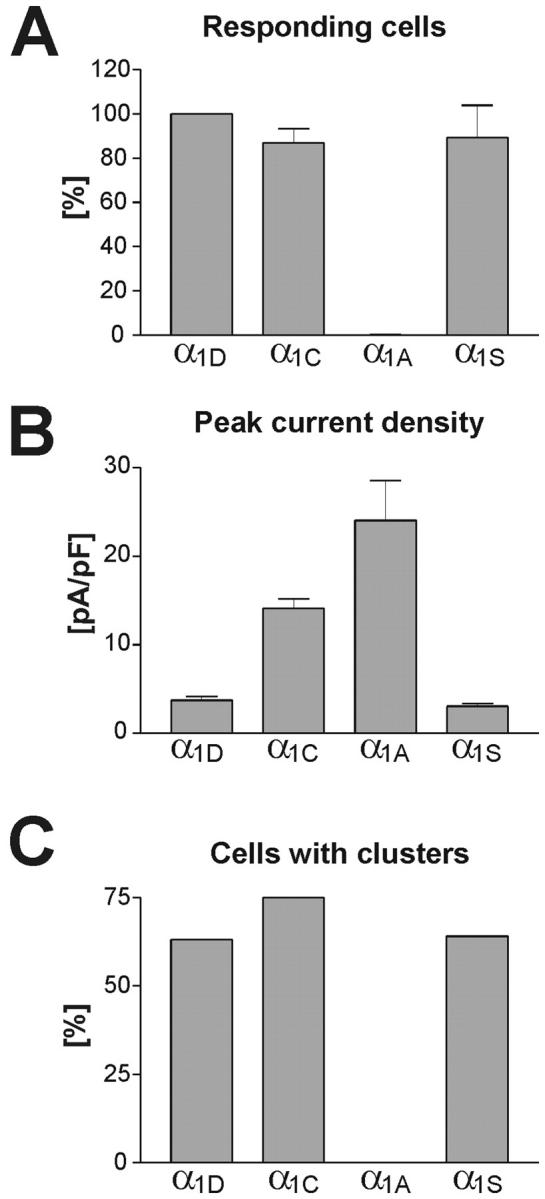FIGURE 4.

The ability of Ca2+ channel isoforms to restore EC-coupling compared to their current densities and targeting properties. (A) Myotubes responding to field stimulation with Ca2+ transients (see Fig. 3) were counted in cultures transfected with GFP-α1D, GFP-α1C, GFP-α1A, and GFP-α1S. Counts from seven experiments are expressed in percent (mean ± SE) with the values of GFP-α1D normalized to 100%. All three L-type channels (GFP-α1D, GFP-α1C, GFP-α1S) restored EC-coupling with similar efficiency, whereas with GFP-α1A only a single responding cell was observed. (B) Average peak current densities shown for the same channel isoforms as above (see also Table 1). Although the nonskeletal α1 isoforms activate action potential-induced Ca2+ transients by CICR, no correlation of current density and restoration of EC-coupling exists (cf. A and B). (C) Fraction of myotubes in which the channel isoforms were targeted into the triads (see Fig. 1). The triad targeting properties of the Ca2+ channel isoforms exactly correspond to their ability to restore EC-coupling (cf. A and C).
